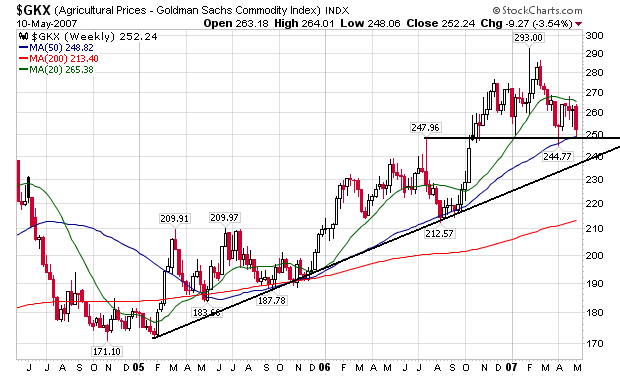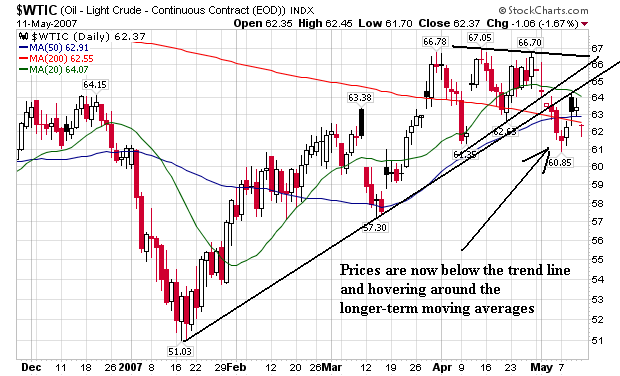The Producer Price Index for Finished Goods increased 0.7 percent in April, seasonally adjusted, the Bureau of Labor Statistics of the U.S.Department of Labor reported today. This advance followed a 1.0-percent rise in March and a 1.3-percent increase in February. In April, the index for finished goods excluding foods and energy remained unchanged for the second consecutive month. At the earlier stages of processing, prices received by producers of intermediate goods rose 0.9 percent following a 1.0-percent increase a month earlier, and the crude goods index fell 1.5 percent after increasing 3.2 percent in March.
Raise your hand if you don't consumer energy. Consider yourself fortunate. And a bald-faced liar.
Let's review one more time. The core rate is only important to the people who set interest rate policy. Statistically they are about .000000000001% (if that high) of the US population. For the rest of us, the total rate is what's important. And that number was fair but not great.
The best news from this report is food prices only increased .4%. These prices had been increasing at high rates for the preceding 4 months. However, the chart of agricultural futures indicates prices have at least stabilized over the last few months.

Energy prices increased 3.4%, which is about the amount they increased the previous two months. But oil prices have come down over the last week despite a strong technical set-up.

If this trend continues it will probably have a positive effect on next month's PPI.
The markets thought this number would give the Fed more room to possibly lower interest rates. I don't think that's in the cards. It's highly possible the Fed already had this number at the meeting earlier this week. If that's true, then they knew of the 0% core rate and still kept the following language in their statement:
In these circumstances, the Committee's predominant policy concern remains the risk that inflation will fail to moderate as expected. Future policy adjustments will depend on the evolution of the outlook for both inflation and economic growth, as implied by incoming information.
Even if the Fed didn't have this number, there have only been two months of 0% core growth. If that trend continues for a few more months, then speculation about a rate cut makes sense. But not until then.